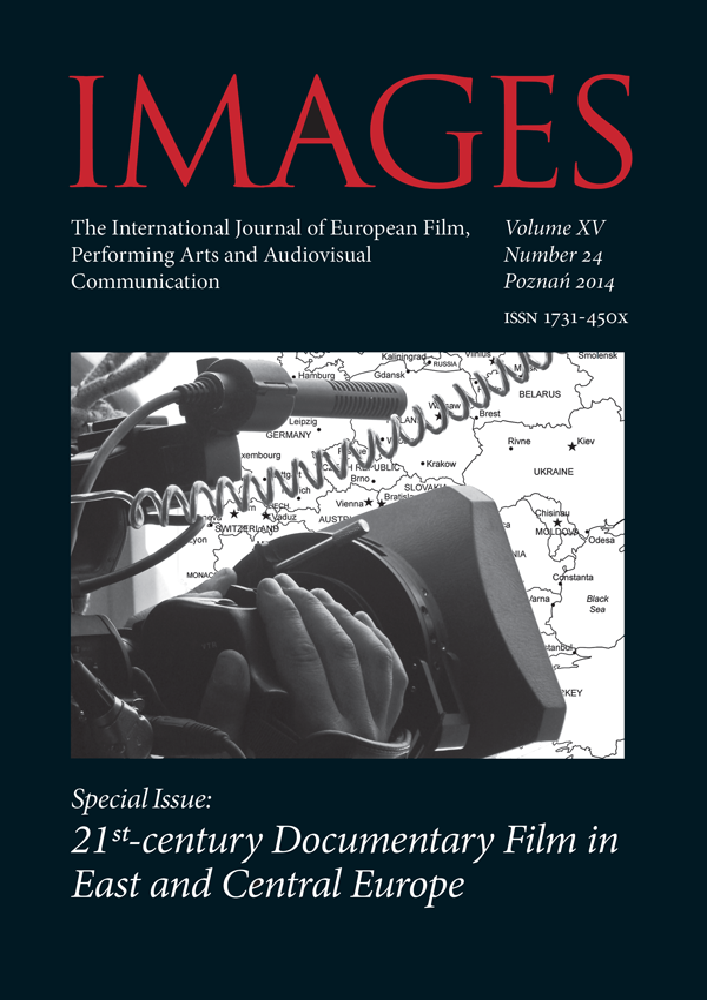Abstrakt
The semiotic mechanism of representing time present in documentary film has remained the same since the 19th century up to this very day. This is governed without exception in the cinematographic “message” by the choice and combination of visual and audio elements shown on the screen, together with the process of fragmentation and segmentation of images in respect to the reality being communicated. The nature of information contained in the moving pictures is one of communicating integrated experiences of the world, and experiences of civilization and culture. Thus conceptualised, information and the process of informing have a dimension that is par excellence anthropological. There in fact lies the broadly understood process of experience on the part of man and society - regardless of the changeability and ad hoc nature of the subjects raised in a given piece of subject matter - representing each time its ‘what’ and ‘how’. Regardless of the means of film expression used, there is always the same point of significance: the difference in the potential between what is known and that which is unknown. That is why the creative documentary proves on each occasion to be a mutual discovery of both known and unknown reality - one shared by the filmmaker and audience.
Bibliografia
B. Matuszewski, Une nouvelle source de l’histoire (Création d’un dépôt cinématographique), Paris 1898. Polish translation: Nowe źródło Historii, trans. B. Michałek, in: Europejskie manifesty kina. Od Matuszewskiego do Dogmy, red. A. Gwóźdź, Wiedza Powszechna, Warszawa 2002, p. 36.
D. Vertov, „O znaczeniu kinematografi i niefabularnej” [On the Meaning of Documentary Cinematography], in: Człowiek z kamerą. Wybór pism, trans. T. Karpowski, Wydawnictwa Artystyczne i Filmowe, Warszawa 1979, p. 38. Original: Д. Вертов, О значении неигровой кинематографии, Moskva 1923.
J. Grierson, “Dokumentalizm (fragmenty)”, trans. Andrzej Kołodyński, in: Europejskie manifesty kina…, p. 264. Original: Grierson on Documentary, University of California Press, 1966, p. 145.
S. Janicki, “Andrzej Munk”, in: Polscy twórcy f lmowi o sobie [Polish Filmmakers on Themselves], Wydawnictwa Artystyczne i Filmowe, Warszawa 1962, p. 58.
K. Karabasz, Cierpliwe oko [The Patient Eye], Wydawnictwa Artystyczne i Filmowe Warszawa 1979, p. 51.
K. Kieślowski, O sobie [Kieślowski on Kieślowski], Znak, Kraków 1997, p. 49.
S. Loznitsa, Autentyczność i fenomen kina [Authenticity and the Phenomenon of Cinema], Masterclass lecture conducted during Planete-Doc Festival, Warszawa 2013.
U. Eco, “Przypadek i intryga (Doświadczenia telewizji a estetyka)”, trans. A. Kreisberg, in: Dzieło otwarte. Forma i nieokreśloność w poetykach współczesnych, Czytelnik, Warszawa 1973, pp. 194–219. Original: U. Eco, Opera aperta: forma e indeterminazione nellepoetiche contemporanee, Bompiani, Fabbri 1989.
A. Gaudreault, J.-M. Lamotte, T. Barnard, “Fragmentation and segmentation in the Lumière ‘Animated Views’”, Th e Moving Image 2003, no. 3.
J. Ostaszewski, Film jako komunikat [Film as a Communication], in: Komunikacja wizualna, ed. P. Francuz. Wydawnictwo Naukowe Scholar, Warszawa 2012.
R. Nycz, Poetyka doświadczenia. Teoria –nowoczesność – literatura [Th e Poetics of Experience. Theory, Modernity and Literature], Instytut Badań Literackich PAN, Warszawa 2012.
J. Kornhauser, A. Zagajewski, Świat nie przedstawiony [The World Yet to Be], Wydawnictwo Literackie, Kraków 1973.
K. Kieślowski, “Dwie rozmowy – wywiad nie do druku” [Two Talks – Discussion, Not Publication] discussion with A. Kołodyński (14 grudnia 1973), Kino 1996, no. 5.
Licencja
Copyright
© 2014 Uniwersytet im. Adama Mickiewicza w Poznaniu
OPEN ACCESS
